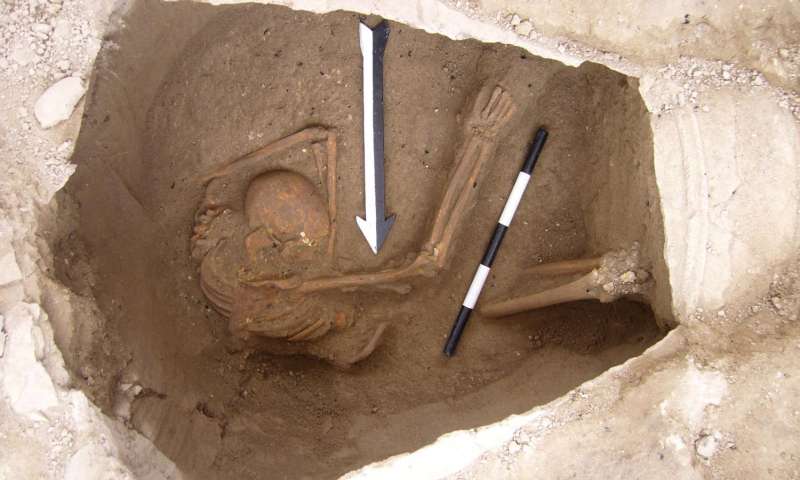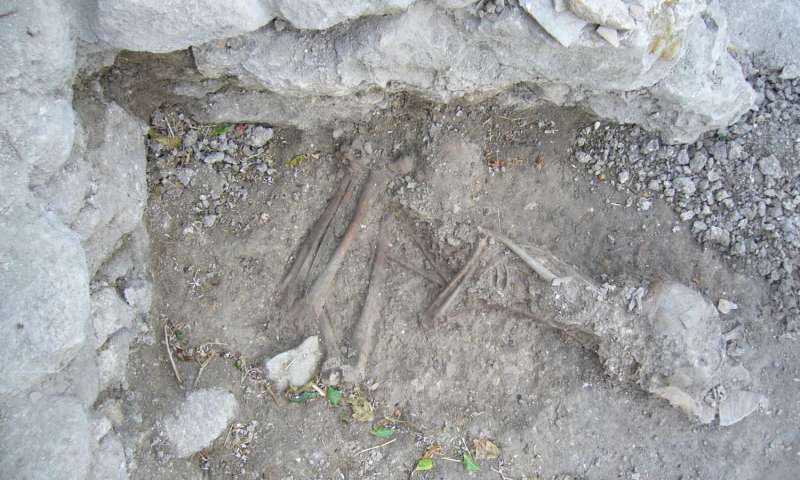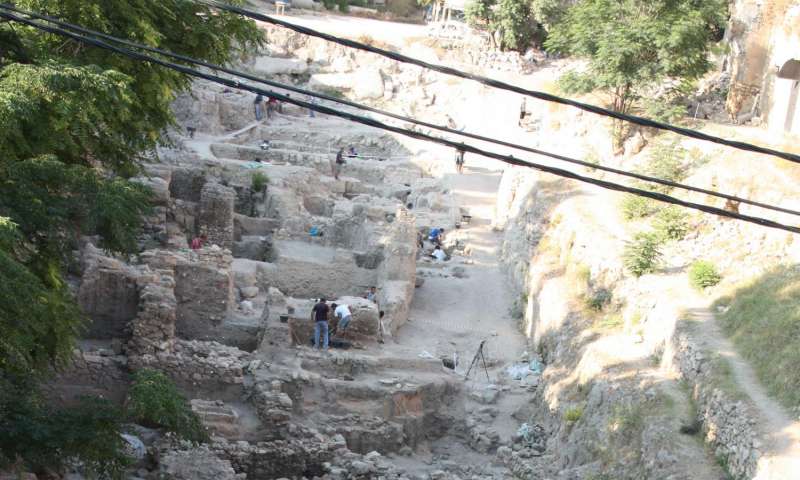The Canaanites, ancient people who can trace their history to more than 4,000 years ago in Levant, are still genetically relevant to this day. Against all odds, today’s Lebanese share a whopping 93% of their DNA with the ancient Canaanites.

A large jar burial containing the remains of one of the individuals sequenced in the study. Credit: Dr. Claude Doumet-Serhal.
The Canaanites, later known as the Phoenicians, are best known as the cursed descendants of Canaan. In the Book of Deuteronomy, the fifth book of the Torah and the Christian Old Testament, we learn that these people incurred God’s wrath, and as such were to be exterminated. According to biblical accounts, the Israeli tribes satisfied this godly request and even scientists believed that after thousands of years of wars, occupation, and intermixing with so many foreign populations, there would be little left of the Canaanite genetic legacy.
A new study published in in the American Journal of Human Genetics proved everyone wrong.
For the last 20 years, archaeologists have been toiling at the Sidon excavation site, a Lebanese port city which is still inhabited. There, a team led by Claude Doumet-Serhal found 160 burials from the Canaanite period. The remains belonged to people of all ages, from infants and children placed in jars to adults buried in the sand.
Of these remains, geneticists working at the Wellcome Trust Sanger Institute sequenced the DNA of five individuals who lived about 3,700 years ago. The results were then compared with those from 99 modern-day Lebanese, but also with genetic information found in databases of modern and ancient populations across Europe and Asia. The Lebanese included in the study were Christian and Muslim alike.
“It was a pleasant surprise to be able to extract and analyse DNA from 4,000-year-old human remains found in a hot environment, which is not known for preserving DNA well. We overcame this challenge by taking samples from the petrous bone in the skull, which is a very tough bone with a high density of ancient DNA. This method of extraction combined with the lowering costs of whole genome sequencing made this study possible,” said Dr Marc Haber, first author from the Wellcome Trust Sanger Institute.
According to the researchers, the ancient people shared about half their DNA with local Neolithic peoples and the other half with Chalcolithic Iranians. Perhaps not coincidentally, this genetic profile is almost identical to that previously reported by scientists who analyzed Bronze Age villagers near ‘Ain Ghazal’ in modern-day Jordan, another Levant country. This means that the Canaanites were widely dispersed across Levant and shared a common genetic background with the Moabites and Israelites.
The really striking finding was that ancient Canaanites had a genetic makeup astonishingly similar to that of modern-day Lebanese currently living in Canaanite cities and towns. As much as 93 percent of the Lebanese genome is shared with their Canaanite predecessors, while 7 percent can be pinned down on Steppe peoples found in what is now Russia. The latter figure in itself is already causing a debate.

The burial of a single sub adult individual sequenced in the study. Credit: Dr. Claude Doumet-Serhal.
Not much is known about the Steppe people migration into Levant or why they had such a profound influence on Caananites — a people which, by all means, seems to have been very successful in conserving its bloodline. More excavations and DNA sampling might shed light on the matter.
Beyond the science, these findings might bear profound cultural implications. For almost a century now, Lebanon has been embroiled in an open civil dispute between Christians and Muslims. On one side, the Christians claim they’re descendants of the Phoenicians while the Muslims see themselves as Arabs. These findings suggest that Muslim or Christian, at least the Lebanese living in Canaanite towns are of the same blood. Hopefully, this knowledge will relieve the inter-tribal tensions that have been going on for too long.
“Genetic studies using ancient DNA can expand our understanding of history, and answer questions about the likely origins and descendants of enigmatic populations like the Canaanites, who left few written records themselves. Now we would like to investigate the earlier and later genetic history of the Near East, and how it relates to the surrounding regions,” said Dr Chris Tyler-Smith, lead author from the Wellcome Trust Sanger Institute.










